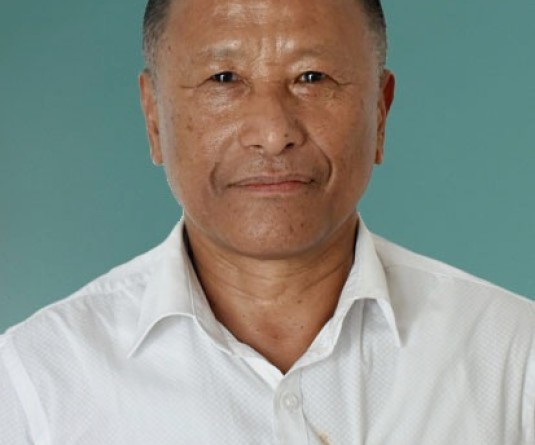Lumami, November 22 (MExN): A lecture on ‘Traditional medicine practices of Nagaland’ was organised by Nagaland University, Lumami under the aegis of Azadi Ka Amrit Mahotsav at I Ihoshe Kinimi Hall on November 21.
Addressing the lecture as the chief guest, Prof Jagadish Kumar Patnaik, Vice Chancellor, NU emphasised the importance of traditional knowledge and asserted that India has a rich tradition, stated a press release issued by PRO NU Lumami.
For him, this holistic element is the blueprint to healthy aspect of our day-to-day lives. “In modern times, despite various innovations and inventions, there is no balance of mind or peace of mind which makes us suffer from many ailments. So, we should try to maintain equilibrium, a harmony in our lifestyle and with nature so as to keep ourselves healthy,” he said.
“We have to look, re-look, discover to rediscover again. He also encouraged the Department of Botany to offer diploma course on Ethnomedicinal plants or traditional medicine in collaboration with the proposed School of Horticulture,” he asserted.
Speaking on ‘Types of Ethnomedicinal Practitioners: Indigenous knowledge of some Naga Tribes,’ one of the resource persons, Dr Neizo Puro from Department of Botany said, “tribal people of Nagaland survived on the bio-resources available within their reach and that the indigenous knowledge system is a part of their social and cultural life, sustaining them since time immemorial.”
He pointed out that the use of ethno-medicinal plants for the treatment of various ailments is a common practice of the Naga tribes and these knowledge systems have been passed down orally from one generation to another.
He asserted that today there seems to be a shift towards the use of ethno-medicinal plants with the realization of the benefits of using natural remedies. This trend has emphasized the importance of conserving and reviving the indigenous knowledge system in a meaningful way for sustained use where about 95% of medicinal plant collection is found in the wild.
He identified four types of practitioners in Nagaland: Practitioners who depend on their experience and the knowledge is passed down from their ancestors; Practitioners who relied on spirits/visions they receive from supernatural beings; People who claim to have the spirits of animals such as tigers, snakes, etc; and Kopiraz (bonesetter) or people who specialize in bone fractures, sprain, etc.
However, such traditional practices/knowledge is not well documented. In most cases, it is difficult to document the traditional knowledge on effective use of plants acquired through years of experience. Moreover, the traditional practitioners neither divulge all the information nor are they willing to share the knowledge.
He highlighted the threats to indigenous traditional knowledge as well as some sustainable measures to conserve and enhance the existing knowledge system of the practitioners. Among others, he said, the practitioners should be acknowledged and duly certified by the government, assistance should be provided to revalidate the applications with scientific approaches for future generations, and the marketability of their products should be ensured. He also said that cultivation of medicinal plants can be a fruitful alternative for the farmers of Northeast India.
He concluded by stating that the tribal have a tremendous passion for medicinal plants and usage, and therefore this knowledge should be harnessed.
Another resource person, Judith Huidina, Research Scholar, Department of Sociology delivered a lecture on ‘Traditional Medicine Practices of Nagaland.’ She began by pointing out that every aspect of the lives of the Nagas, as an indigenous people, was greatly dependent and closely linked to the forces of nature and the resources mother earth provided until recently. The animistic rituals and practices have evolved since ancient times due to the strong dependence on the natural environment.
For indigenous communities, the choice of treatment or prevention of the undesired state of health depended on their historical experiences, beliefs and understanding of the causative factors.
She dwelt on the traditional understanding of health as being not limited to just the absence of disease, disability or death, but as a state of physical, mental, emotional, spiritual and social well-being. Hence the traditional practices involved beliefs, customs, rituals, folklores, taboos and prescriptions involving plant and animal species as well as minerals. Traditionally, the Nagas have developed several preventive, curative, palliative and promotive medicines, procedures and practices, along with supplementary customs and rituals.
The Naga ancestors had identified the medicinal values or qualities of different food and included them in their diet; the types of food that were eaten, the way it was prepared, the quantity consumed, and the regularity of consumption were all designed to benefit the individual. Certain animals, like the dog, the porcupine, the cricket, etc., all seem to have specific medicinal values apart from providing much-needed protein and nutrition. Traditional healthcare providers in the Naga context have been bone setters, herbalists, traditional midwives, diviners, faith healers, and prayer warriors.
The programme was chaired by Dr Deepak K Bhaskar, Dept of Political Science and graced by Prof Jagadish Kumar Patnaik, Vice Chancellor, NU as chief guest. The welcome address was given by Prof Upasana Bora, HoD, Dept of Chemistry and vote of thanks was delivered by Prof Athungo Ovung, HoD, Dept of Sociology.






